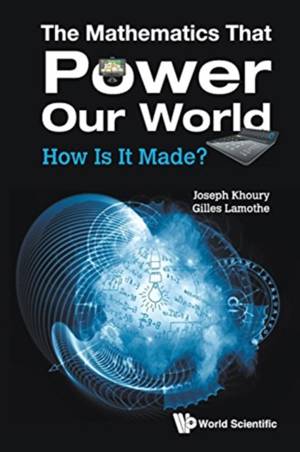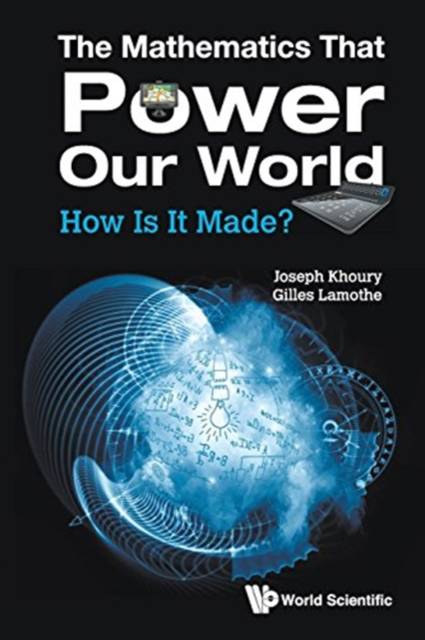
En raison d'une grêve chez bpost, votre commande pourrait être retardée. Vous avez besoin d’un livre rapidement ? Nos magasins vous accueillent à bras ouverts !
- Retrait gratuit dans votre magasin Club
- 7.000.000 titres dans notre catalogue
- Payer en toute sécurité
- Toujours un magasin près de chez vous
En raison de la grêve chez bpost, votre commande pourrait être retardée. Vous avez besoin d’un livre rapidement ? Nos magasins vous accueillent à bras ouverts !
- Retrait gratuit dans votre magasin Club
- 7.000.0000 titres dans notre catalogue
- Payer en toute sécurité
- Toujours un magasin près de chez vous
Mathematics That Power Our World, The: How Is It Made?
Joseph Khoury, Gilles Lamothe
Livre broché | Anglais
42,95 €
+ 85 points
Description
The Mathematics That Power Our World: How Is It Made? is an attempt to unveil the hidden mathematics behind the functioning of many of the devices we use on a daily basis. For the past years, discussions on the best approach in teaching and learning mathematics have shown how much the world is divided on this issue. The one reality we seem to agree on globally is the fact that our new generation is lacking interest and passion for the subject. One has the impression that the vast majority of young students finishing high school or in their early post-secondary studies are more and more divided into two main groups when it comes to the perception of mathematics. The first group looks at mathematics as a pure academic subject with little connection to the real world. The second group considers mathematics as a set of tools that a computer can be programmed to use and thus, a basic knowledge of the subject is sufficient. This book serves as a middle ground between these two views. Many of the elegant and seemingly theoretical concepts of mathematics are linked to state-of-the-art technologies. The topics of the book are selected carefully to make that link more relevant. They include: digital calculators, basics of data compression and the Huffman coding, the JPEG standard for data compression, the GPS system studied both from the receiver and the satellite ends, image processing and face recognition.This book is a great resource for mathematics educators in high schools, colleges and universities who want to engage their students in advanced readings that go beyond the classroom discussions. It is also a solid foundation for anyone thinking of pursuing a career in science or engineering. All efforts were made so that the exposition of each topic is as clear and self-contained as possible and thus, appealing to anyone trying to broaden his mathematical horizons.
Spécifications
Parties prenantes
- Auteur(s) :
- Editeur:
Contenu
- Nombre de pages :
- 204
- Langue:
- Anglais
Caractéristiques
- EAN:
- 9789813144088
- Date de parution :
- 24-06-16
- Format:
- Livre broché
- Format numérique:
- Trade paperback (VS)
- Dimensions :
- 150 mm x 226 mm
- Poids :
- 272 g

Les avis
Nous publions uniquement les avis qui respectent les conditions requises. Consultez nos conditions pour les avis.






